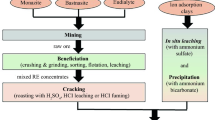Abstract
The chemical properties of Ge are similar to Si. This study investigated whether Ge can substitute for, or is antagonistic to, Si in bone formation. Sixty male weanling Sprague-Dawley rats were randomly assigned to treatment groups of 12 and 6 in a 2×4 factorially arranged experiment. The independent variables were, per gram fresh diet, Si (as sodium metasilicate) at 0 or 25 μg and Ge (as sodium germanate) at 0, 5, 30 or 60 μg. Results confirmed that Ge does not enhance Si deprivation and provided evidence that Ge apparently can replace Si in functions that influence bone composition. When Si was lacking in the diet, calcium and magnesium concentrations of the femur were decreased; this was reversed by feeding either Ge and/or Si. Similar effects were found for zinc, sodium, iron, manganese, and potassium of vertebra. There were some responses to Si deprivation that Ge could not reverse: Ge did not increase femur copper, sodium, or phosphorus or decrease molybdenum of vertebra, effects that were eveked by Si supplementation. Additionally, some findings suggested that 60 μg Ge/g diet could be a toxic intake for the rat. On the other hand, some responses induced by Ge indicate that this element may be acting physiologically other than as a substitute for Si. Germanium itself affected bone composition. Germanium supplementation decreased Si and molybdenum in the femur and increased DNA in tibia. Regardless of the amount of Si fed, animals fed 30 μg Ge/g diet had increased tibial DNA compared to animals fed 0 or 60 μg Ge; however, tibial DNA of animals fed 30 μg Ge was not statistically different from those animals fed 5 μg Ge. Thus, Ge may be of nutritional importance.
Similar content being viewed by others
References
H. A. Schroeder, M. Kanisawa, D. V. Frost, and M. Mitchener,J. Nutr. 96, 37–45 (1968).
H. A. Schroeder and J. J. Balassa,J. Nutr. 92, 245–252.
P. S. Schein, M. Slavik, T. Smythe, D. Hoth, F. Smith, J. S. Macdonald, and P. V. Woolley,Cancer Treat. Rep. 64, 1051–1056 (1980).
G. Falkson and H. C. Falkson,Cancer Treat. Rep. 67, 189–190 (1983).
F. Suzuki, R. R. Brutkiewicz, and R. B. Pollard,Br. J. Cancer 52, 757–763 (1985).
T. Sanai, S. Okuda, K. Onoyama, N. Oochi, Y. Oh, K. Kobayashi, K. Shimamatsu, S. Fujimi, and M. Fujishima,Nephron. 54, 53–56 (1990).
N. J. Vagelzang, D. H. Gesme, and B. J. Kennedy,Am. J. Clin. Oncol. 8, 341–344 (1985).
T. Matsusaka, M. Fujii, T. Nakano, T. Terai, A. Kurata, M. Imaizumi, and H. Abe,Clin. Nephrol. 30, 341–345 (1988).
K. Okada, K. Okagawa, K. Kawakami, Y. Kuroda, K. Morizumi, H. Sato, H. Morita, S. Shimomura, and S. Saito,Clin. Nephrol. 31, 219–224 (1989).
A. G. Schauss,Biol. Trace Elem. Res. 29, 267–280 (1991).
H. Hachisu,J. Med. Phamaceu. Sci. 9, 1507–1509 (1983).
E. M. Carlisen,Fed. Proc. 33, 1758–1766 (1974).
F. H. Nielsen and B. Bailey,Lab. Anim. Sci. 29, 502–506 (1979).
F. E. Lichte, S. Hopper, and T. W. Osborn,Anal. Chem. 52, 120–124 (1980).
F. H. Nielsen, T. R. Shuler, T. J. Zimmerman, and E. O. Uthus,Biol. Trace Elem. Res. 17, 91–107 (1988).
T. Gurney, Jr. and E. G. Gurney, inMethods in Molecular Biology, vol. 2: Nucleic Acids, Walker, J. M., ed., Humana, Clifton, NJ, pp. 5–11 (1989).
SAS Institute, Inc.,SAS User's Guide: Statistic Version 5 Edition, SAS Institute, Cary, NC (1985).
C. W. Mehard and B. E. Volcani,Bioinorganic Chem. 5, 107–124 (1975).
A. Furst,Toxicol. Indust. Health 3, 167–204 (1987).
R. E. Lee,J. Protozool. 25, 163–166 (1978).
W. M. Darley and B. E. Volcani,Exp. Cell Res. 58, 334–342 (1969).
B. Venugopal and T. D. Luckey,Chemical Toxicity of Metals and Metalloids, Plenum, New York, 1978.
U. Weser,Hoppe-Seylers' Z. Physiol. Chem. 349, 989–994 (1968).
M. Yamaguchi and M. Uchiyama,Res. Exp. Med. 187, 395–400 (1987).
E. M. Carlisle,Sci. Tot. Environ. 73, 95–106 (1988).
Author information
Authors and Affiliations
Rights and permissions
About this article
Cite this article
Seaborn, C.D., Nielsen, F.H. Effects of germanium and silicon on bone mineralization. Biol Trace Elem Res 42, 151–164 (1994). https://doi.org/10.1007/BF02785386
Received:
Revised:
Accepted:
Issue Date:
DOI: https://doi.org/10.1007/BF02785386




